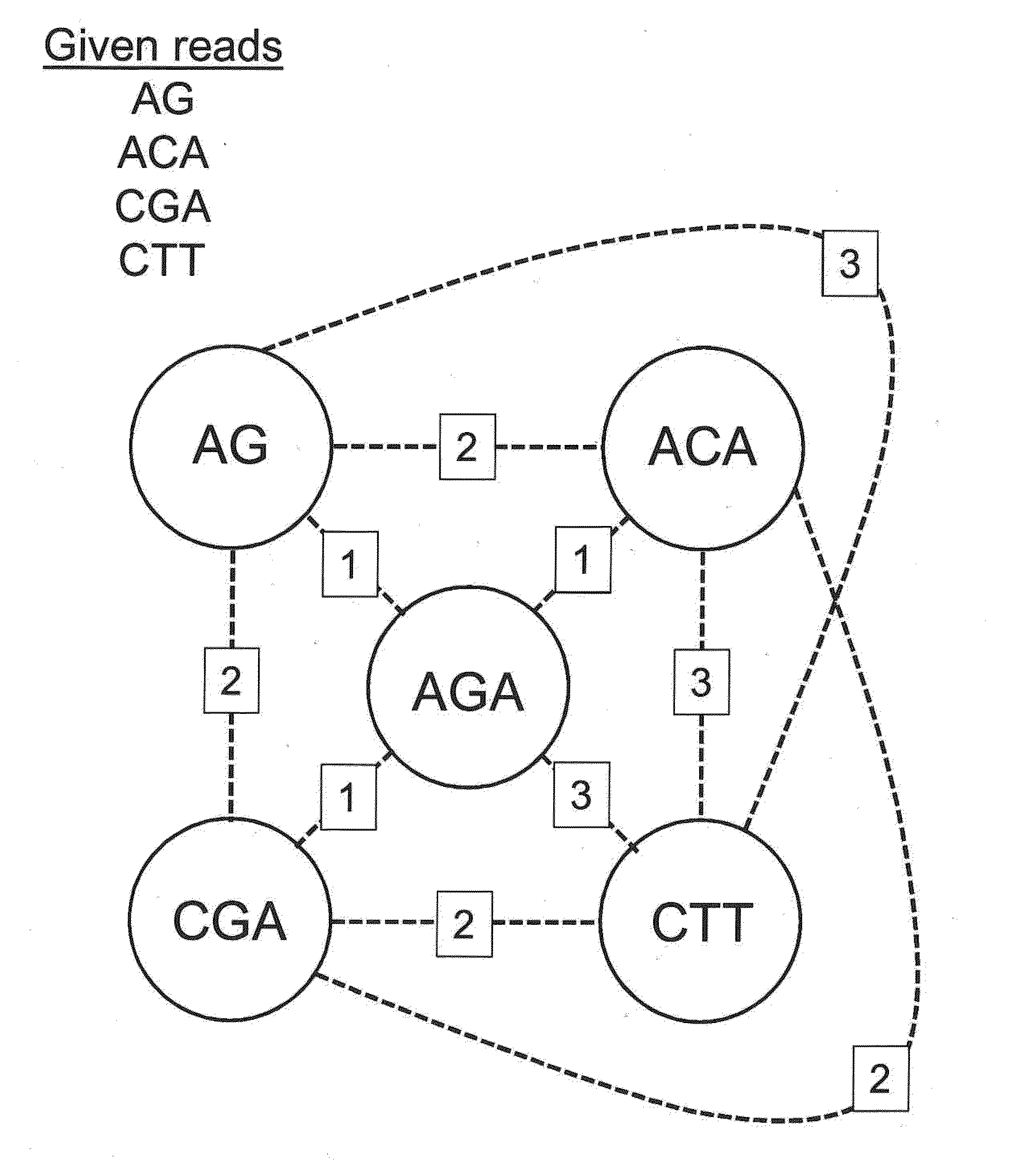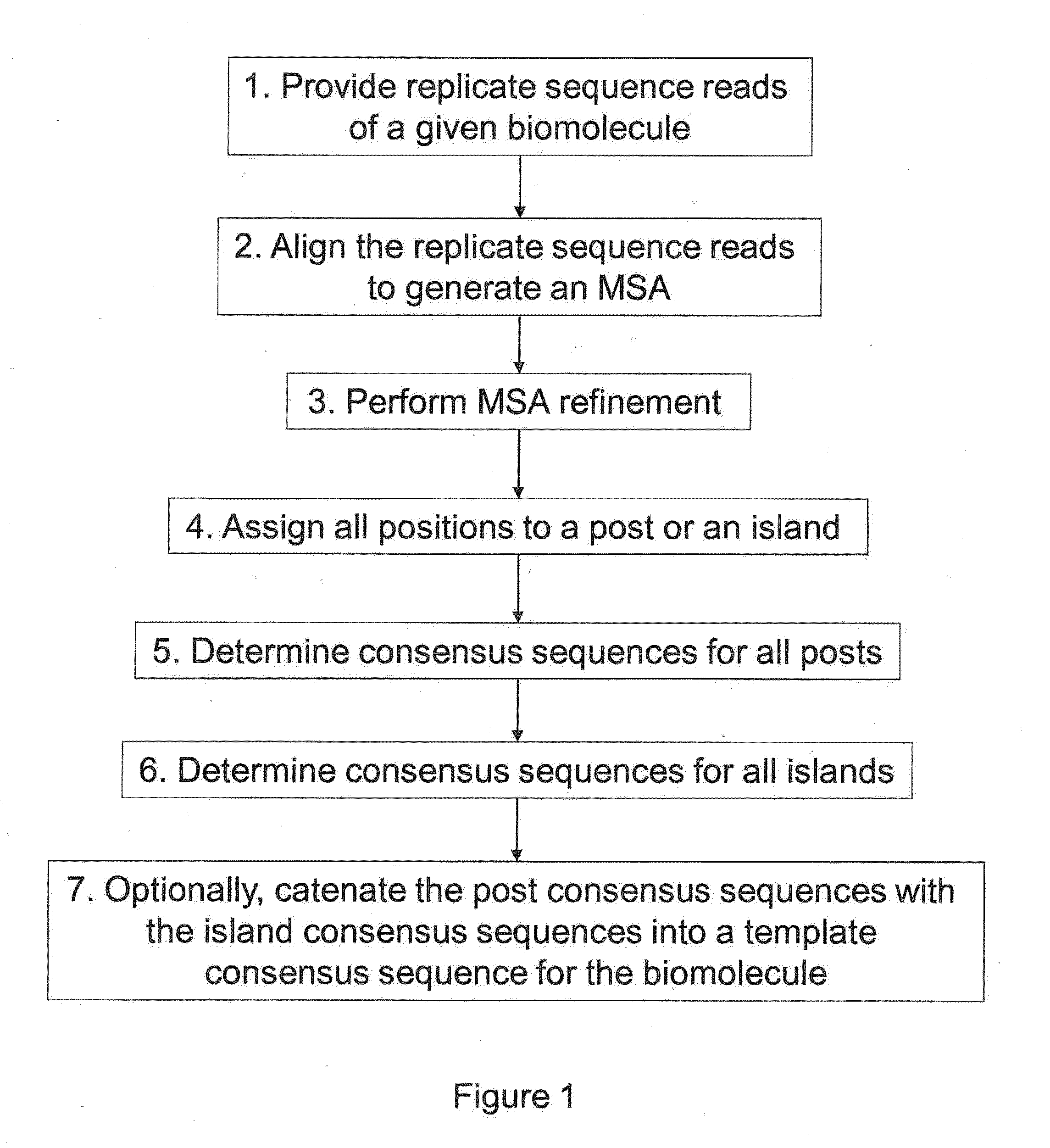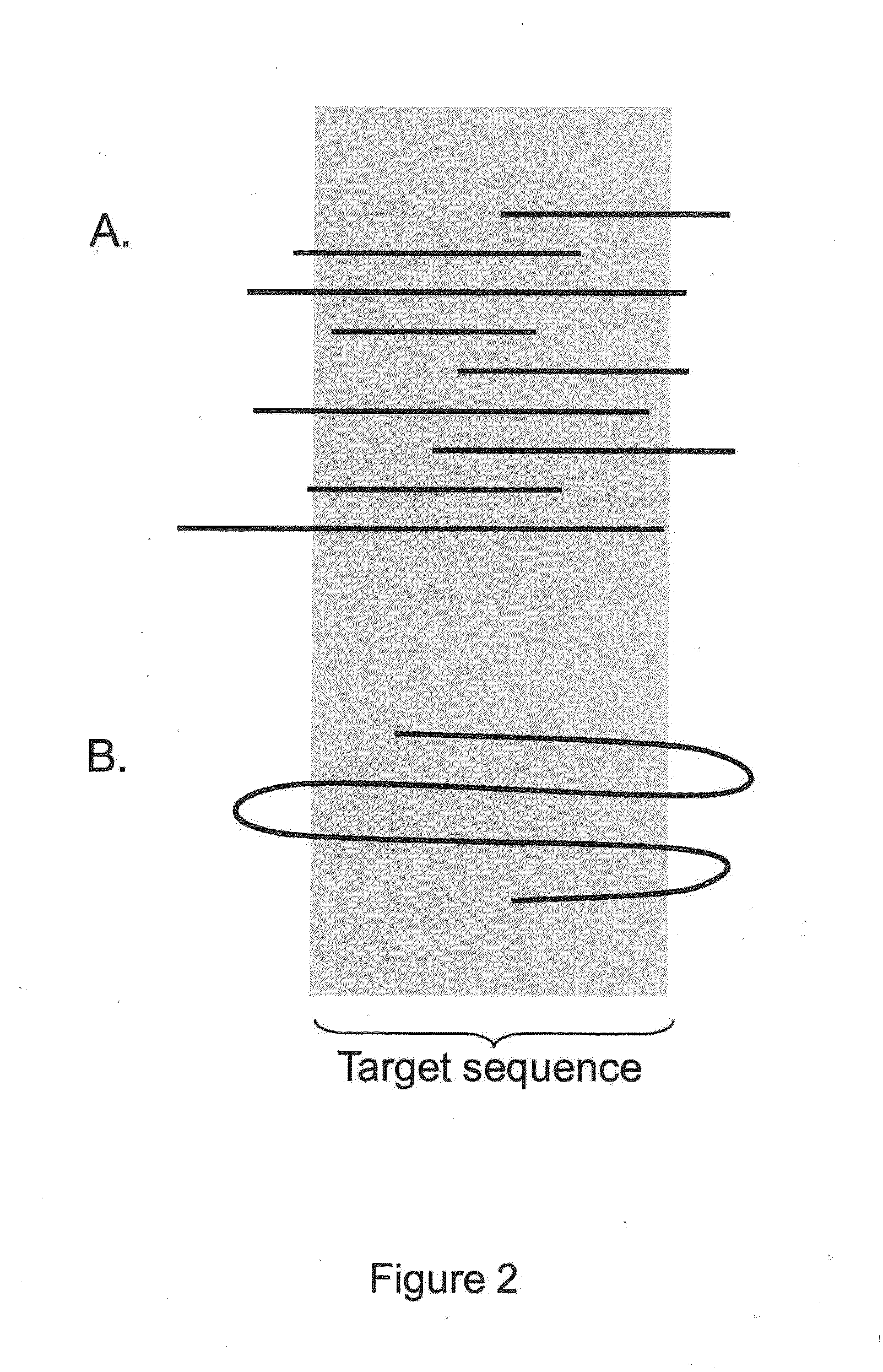Algorithms for sequence determination
a sequence determination and algorithm technology, applied in the field can solve the problems that the technology and method of biomolecule sequence determination do not always produce perfect sequence data, and achieve the effect of improving the accuracy of consensus biomolecule sequence determination and improving the validation of sequence reads
- Summary
- Abstract
- Description
- Claims
- Application Information
AI Technical Summary
Benefits of technology
Problems solved by technology
Method used
Image
Examples
Embodiment Construction
I. GENERAL
[0027]Sequencing applications generally fall into two categories, de novo assembly and re-sequencing. Both efforts require highly-automated, accurate assembly of nucleic acid fragments into contigs. They differ in that de novo assembly is performed using overlapping reads, while re-sequencing assumes knowledge of a reference sequence and maps reads to the reference. Although establishing relative read position is significantly easier for re-sequencing, the subsequent task of calling a consensus base for each aligned column in the contig or alignment is still challenging. The standard of sequencing accuracy was set to 99.99% by the National Human Genome Research Institute (NHGRI) in 1998. While a single base call for each position in a template may not achieve such accuracy, but with increases in coverage multiple overlapping sequencing reads for a template sequence having lower raw read accuracy can be used to determine a consensus sequence with acceptably high accuracy. C...
PUM
 Login to View More
Login to View More Abstract
Description
Claims
Application Information
 Login to View More
Login to View More - R&D
- Intellectual Property
- Life Sciences
- Materials
- Tech Scout
- Unparalleled Data Quality
- Higher Quality Content
- 60% Fewer Hallucinations
Browse by: Latest US Patents, China's latest patents, Technical Efficacy Thesaurus, Application Domain, Technology Topic, Popular Technical Reports.
© 2025 PatSnap. All rights reserved.Legal|Privacy policy|Modern Slavery Act Transparency Statement|Sitemap|About US| Contact US: help@patsnap.com



